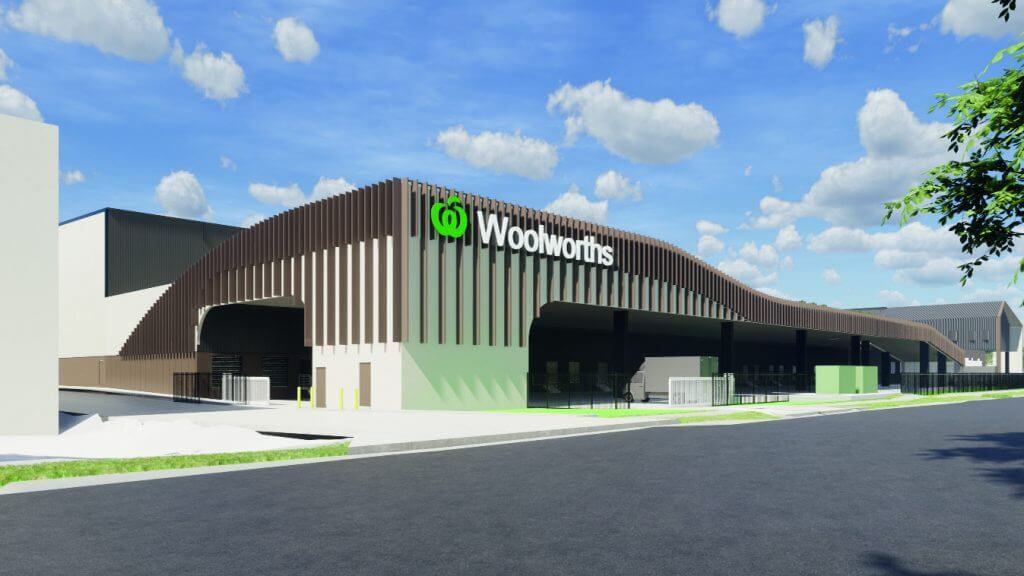All beginnings are difficult? Not with the right partner and a well-thought-out strategy. Food retailers rely on intelligent food retail networks to offer their customers the best possible shopping experience offline and online. Food retail e-commerce, micro fulfillment and last-mile solutions – these are no longer foreign words in the industry.
Rudolf Hansl, Dara Ansari and Gudrun Fischer provide an interesting insight into the network approach of food retailing and the importance of data for strategic decision-making.

Rudolf Hansl has been part of the management team at KNAPP Systemintegration GmbH in Leoben since 2016 and, as Vice President Food Retail Solutions, is also responsible for providing optimal support to food retailers. Through years of industry experience, he knows the market and the challenges in food retail.

Dara Ansari has been part of the KNAPP team for seven years. As the person responsible for Innovations & Logistics, he takes the lead in driving the development of solutions and innovations for the food retail industry.

Gudrun Fischer joined KNAPP in 2018 and, as Head of Digital Business Models, deals with new digital business potentials in the market. She is involved with the analysis of data, because data forms the basis for an intelligent warehouse.
What is meant by intelligent food retail networks?
Rudolf Hansl:
It’s important to provide the right set of technologies for every step along the value chain. From adaptive and flexible automation solutions for e-commerce fulfillment to urban networks. Consumers who have ordered groceries online once, continue to order online. Therefore, it’s becoming more and more important to think in terms of networks: intelligent combinations of Micro Fulfillment Centers (MFC), Central Fulfillment Centers (CFC) and Suburban Fulfillment Centers (SFC). The opportunities in these networks are different, depending on the purchasing and order quantities, and offer more flexibility in the future. Also, innovative concepts for urban supply are getting more and more important. Such concepts also bring fresh ideas to the sales floors in brick-and-mortar retail.
Dara Ansari:
For end customers, a well-planned food retail network means flexibility and effortless switching between offline and online. Flexible last mile solutions also make it easy for consumers to get to their goods ordered online – pick-up points and home deliveries are the best-known models here. Concepts that combine the best of stationary and online stores are also in demand. This enables a unique customer experience directly at the point of sale. The traditional and digital retail fuses, so linking all sales channels with an omnichannel solution can also be an option in food retail.
How has food retail e-commerce changed in the last years?
Rudolf Hansl:
Grocrey e-commerce has seen tremendous growth in recent years. In the past, e-commerce accounted for only a small percentage of our customers’ business. But then something happened that changed everything. Suddenly, millions of households needed to be supplied with groceries and everyday goods every week. Of course, retailers had to respond to this phenomenal change in the grocery business.
Dara Ansari:
These developments obviously mean that grocers need and want to change their online business on a large scale. An automation solution for food retail e-commerce enables higher quality for the consumer, as well as a wide selection, high product availability and also brings economic benefits.
An automation solution for food retail e-commerce enables higher quality for the consumer, as well as a wide selection, high product availability and also brings economic benefits.
Which online strategy leads a food retailer to success?
Dara Ansari:
It always depends (laughs). There are many factors that play a role, such as a company’s maturity level, demographics, or where the retailer’s customers are located. It is very important for food retailers to know their customers and analyze their shopping behavior before embarking on automation. Based on this, a suitable decision can be made how a concept for an automated food retail network might look like.
What role does data play in finding the optimal concept for our customers?
Gudrun Fischer:
When we start a project, we gather information that allows us to design a system. Based on this, we plan a logistics concept that is perfectly tailored to our customers. Of course, this planning is based on a database that can always change over time. Therefore, it is of particular importance to monitor the data over a longer period of time. The key is to proactively see developments in the customer’s business to ensure that the solution still fits the current requirements. The flexibility of our technologies and systems makes it possible for us to adapt the solution to the specific situation of the company.
What are the advantages of using an MFC solution?
Dara Ansari:
Above all, an MFC makes a rapid entry into the e-commerce business possible. With a manageable investment, retailers can familiarize their employees with automation and increase efficiency many times over compared to manual picking. Many retailers start with food retail e-commerce and assemble their orders directly in the stores. This manual picking of online orders directly in the supermarkets mainly causes high costs and also affects the consumer shopping experience in the stores.
Rudolf Hansl:
Our MFC concept, which has already been implemented worldwide, gives us a head start of several years over comparable solutions on the market. Orders are processed five times faster. In an automated MFC, a single item can be processed at the workstations every 6 seconds, so that it is ready for pickup in a very short time.
Our MFC concept, which has already been implemented worldwide, gives us a head start of several years over comparable solutions on the market.
What could be further developments regarding the MFC solution?
Dara Ansari:
Fundamentally, it is very important to have a solution that offers maximum flexibility and scalability as well as making the best possible use of the available space. We are also considering further automation steps, such as fully automated picking with Pick-it-Easy Robot. With the intelligent camera system and AI-based object recognition, the robot solution enables gentle handling of food articles while increasing efficiency.
Rudolf Hansl:
A lot has happened in the field of robotics. A few years ago, only a small number of food articles were suitable for robots – today, this figure is already 50 percent. Our self-learning software plays an important role in this. As a result, performance increases continuously, and Pick-it-Easy Robot improves with every handle. The system learns on its own to grip certain items more firmly and others more gently.
How do retailers get access to the right information to make strategic decisions?
Gudrun Fischer:
With KiSoft Analytics we offer a smart tool to optimize the operation of all systems. The software analyzes all relevant data, visualizes dashboards and KPIs and helps to make the right decisions quickly and easily. Our customers can access all the information from their installations at any time – utilization, material flow, inventories and processes. Logistics processes are linked with realtime data at machine level, so to speak. With the data generated, retailers can derive trends and forecasts for their business and make the right decisions based on that – both tactically in the short term as well as strategically in the long term.
With our multi-site dashboards, dealers also can compare multiple installations. This makes it possible to quickly identify causes for deviations at individual sites and derive appropriate measures. In this way, retailers can ensure that all sites in their food retail network are performing to their maximum potential.
With KiSoft Analytics we offer a smart tool to optimize the operation of all systems. With the data generated, retailers can derive trends and forecasts for their business and make the right decisions based on that.
Do you think, e-commerce will become more important than brick-and-mortar?
Rudolf Hansl:
In my opinion, e-commerce will not take over the supermarkets. There will always be a place for supermarkets, but more and more customers will do a part of their shopping online. They will use the experience in the supermarkets to shop fresh groceries and focus on e-com for the rest of the articles. But who knows, there have always been surprises and we can’t predict the future.
Best Practice: Woolworths relies on Food Retail Networks from KNAPP
With its entry into grocery e-commerce, Woolworths, Australia’s largest grocery retailer, rethought and refocused its strategy. Since then, Woolworths has relied on food retail networks consisting of stores and three Micro Fulfillment Centers in Australia and New Zealand. From 2024, the network will be expanded to include a highly automated CFC in Auburn (Western Sydney). E-commerce is an important part of the business and also contributes significantly to the growth of the Australian supermarket giant.

Learn more about our solution at Woolworths
Further reading recommendations

The FAST Picking concept uses full automation to solve numerous challenges in logistics for the food retail sector Thanks to efficient automation, the shelves in supermarkets are always full.

The grocery industry is transforming its way into the future. Grocers using MFCs will be the ones getting it right first.

Just a click or two puts clothes, fresh produce, electronic items and much more in your online shopping cart. The effects of the COVID-19 pandemic just made the boom in online shopping even greater. That’s why it makes sense to understand the advantages of efficient e-commerce fulfilment and how a tailor-made logistics solution is created.
Additional Information
Have we sparked your interest? We look forward to hearing from you at ksi.sales@knapp.com
